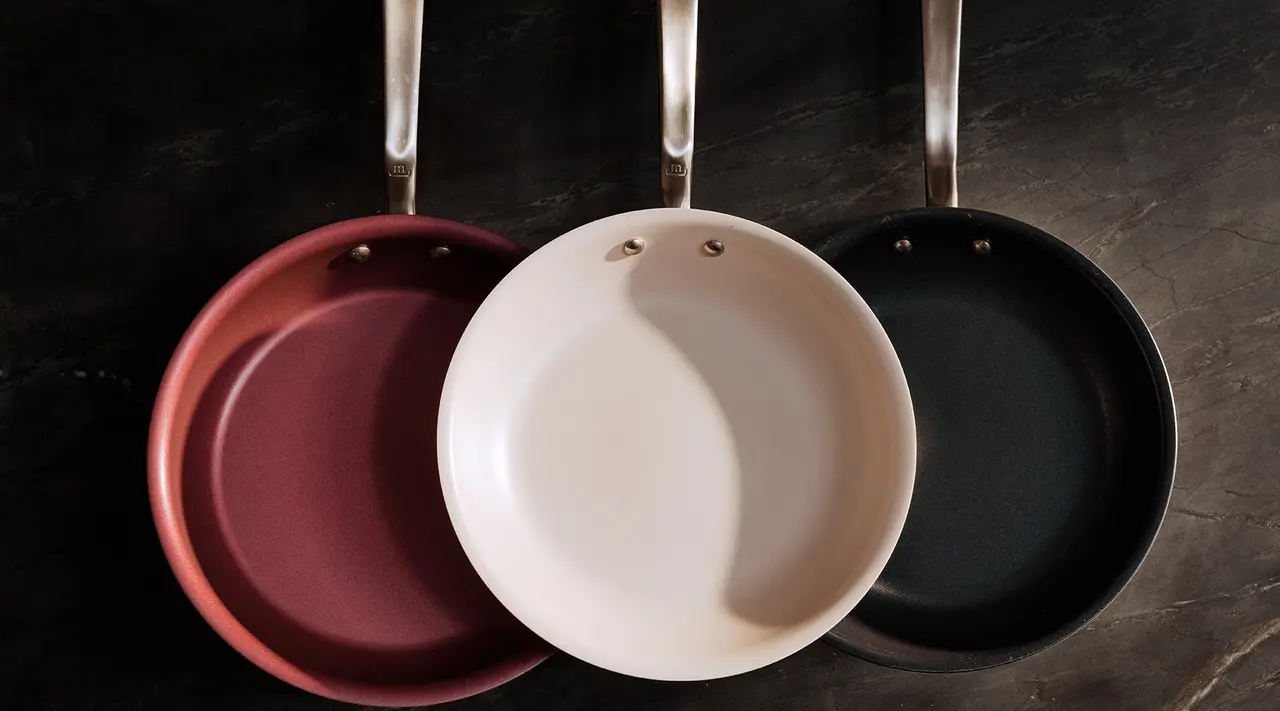While recycling or reusing Stainless Clad or Carbon Steel Pans has always been easy, recycling Non Stick Pans poses its own set of questions, but today, there are more options than ever.
When Non Stick Pans first came out in the 1950s and 1960s, curbside recycling didn’t exist yet and few consumers were thinking about the ecological impact of their waste. But by the 1970s and 1980s, when American landfills started filling up with plastic and the environmental movement began, customers started looking for ways to repurpose or recycle pans that were heavily used.
It wasn’t until the 2010s that the push to recycle these pans led to businesses offering mail-back options. Made In is proudly one of them.
While our Carbon Steel Frying Pans can be reseasoned again and again, when a Non Stick Pan starts to lose its non stick tendencies, it’s likely time to replace it. But instead of throwing out the old pan, we recommend either donating it to a Goodwill or Salvation Army location, passing it along to a neighbor through a Buy Nothing group, or recycling it, through us.
When you’re ready to replace a pan, there are a few things to consider. The first step is figuring out what it’s made of. Most frying pans, skillets and saucepans are made from nonferrous metal, such as aluminum, copper or stainless steel. If a magnet sticks to the pot, it’s ferrous, or made with iron.
Some scrap metal recycling centers accept these ferrous pots and pans, but a mail-back option is better for nonferrous and non stick cookware in particular.
Most Non Stick Cookware coated with polytetrafluoroethylene (or PTFE) cannot be recycled until the coating has been removed.
Made In offers an industry first mail-back option, where customers send used pans to be buffed and recycled. Made In will accept any pan for recycling, whether it’s a Made In Pan or one from another company. They will either recycle it or help it find a new home via a Habitat for Humanity Restore.
And, if it’s time to replace your Non Stick Cookware, consider Made In for that, too. Our ProCoat Non Stick Cookware is made with our Award-Winning Stainless Clad construction as the base. Made in Italy, we add multiple layers of a professional-grade coating to create a surface that isn’t just non stick, but durable as well.
It’s used in the best restaurants in the world, night in and night out.






























